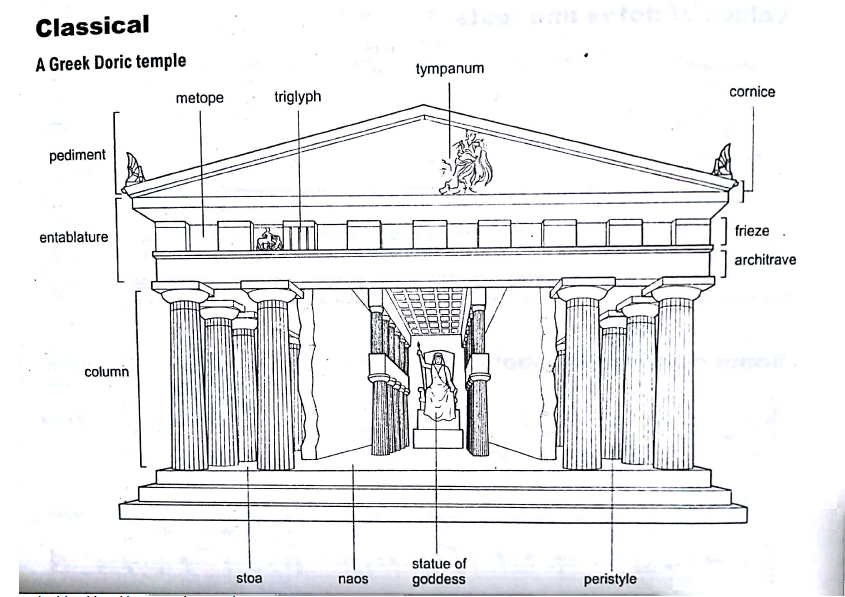Definition Of Cornices

| Meaning, pronunciation, translations and examples
Definition of cornices. A narrow box cornice is one in which "the projection of the rafter serves as a nailing surface for the soffit board as well as the fascia trim." It describes an area or space that overhangs something else. As space is a noun, cornice is also a noun. What does cornice mean?
Plural of cornice··nominative plural of cōrnīx accusative plural of cōrnīx vocative plural of cōrnīx Cornice synonyms, cornice pronunciation, cornice translation, English dictionary definition of cornice. What does cornice mean?. Cornices synonyms, cornices pronunciation, cornices translation, English dictionary definition of cornices.
A strip of molding that... The decorative top edge of a building or column. Cornices had a basic utilitarian purpose, because they directed rainwater away from the sides of a building, but they quickly became a decorative element as well. A decorative element applied at the topmost part of the wall of a room, as with a crown molding.
To learn more about what data we collect and your privacy options, see our Greek architecture had three orders: A horizontal molding projecting along the top of a wall, building, etc. Learner's definition of CORNICE [count] 1 :
Box cornices enclose the cornice of the building with what is essentially a long narrow box. What made you want to look up cornice? However, house eaves may also be called "cornices" if they are finished with decorative molding. Look it up now!
A cornice is a strip of plaster , wood, or stone which goes along the top of a wall or... The crest of the mountain) where it attaches and builds out horizontally. The Greek Doric and lonic cornices recall early wooden roof forms, and the Egyptian cavetto-and-fillet cornice is a derivation of the overhanging papyrus stalks that formed the eaves of primitive shelters. What makes a cornice different from a valance is how it is constructed.
Cornices are hard top treatments, meaning the fabric is often created by upholstering a board with no loose fabric hanging at the bottom. Plural form of cornice... A snow cornice or simply cornice (from the Italian cornice meaning "ledge") is an overhanging edge of snow on a ridge or the crest of a mountain and along the sides of gullies. A decorative border found where the ceiling meets the walls in some rooms and also along the top….
What does cornice mean? Raking cornice definition is - a cornice that follows the slope of a gable or pediment. The cornice undoubtedly had its origin in the primitive eave projection: The top part of an entablature 3.
Cornice is defined by the lexicographers at Oxford Dictionaries as An ornamental molding around the wall of a room just below the ceiling... They form by wind blowing snow over sharp terrain breaks (e.g. Cornice is defined by the lexicographers at Oxford Dictionaries as An ornamental moulding round the wall of a room just below the ceiling... Crown molding is not a cornice, but if the molding hangs over something, like a window or air vent, the.
Raking cornice definition, either of two straight, sloping cornices on a pediment following or suggesting the slopes of a roof. A projecting, decorative strip above a window, designed to keep a curtain rod from showingOrigin of corniceFrench from... A circumscribed, conical, horny induration and thickening of the stratum corneum that causes severe pain by pressure on nerve endings in the corium. The uppermost part of an entablature.
Zea mays, a tall cereal plant that produces kernels on large ears and is the source of corn oil. A decorative border found where the ceiling meets the walls in some rooms and also along the top…. Corns are always caused by friction or pressure from poorly fitting shoes or hose. A box cornice may further be divided into either the narrow box cornice or the wide box cornice type.
In this sense, while most cornices are also eaves, not all eaves are usually considered cornices— eaves are primarily functional and not. Cornice (plural cornices) (architecture) A horizontal architectural element of a building, projecting forward from the main walls, originally used as a means of directing rainwater away from the building's walls.



















